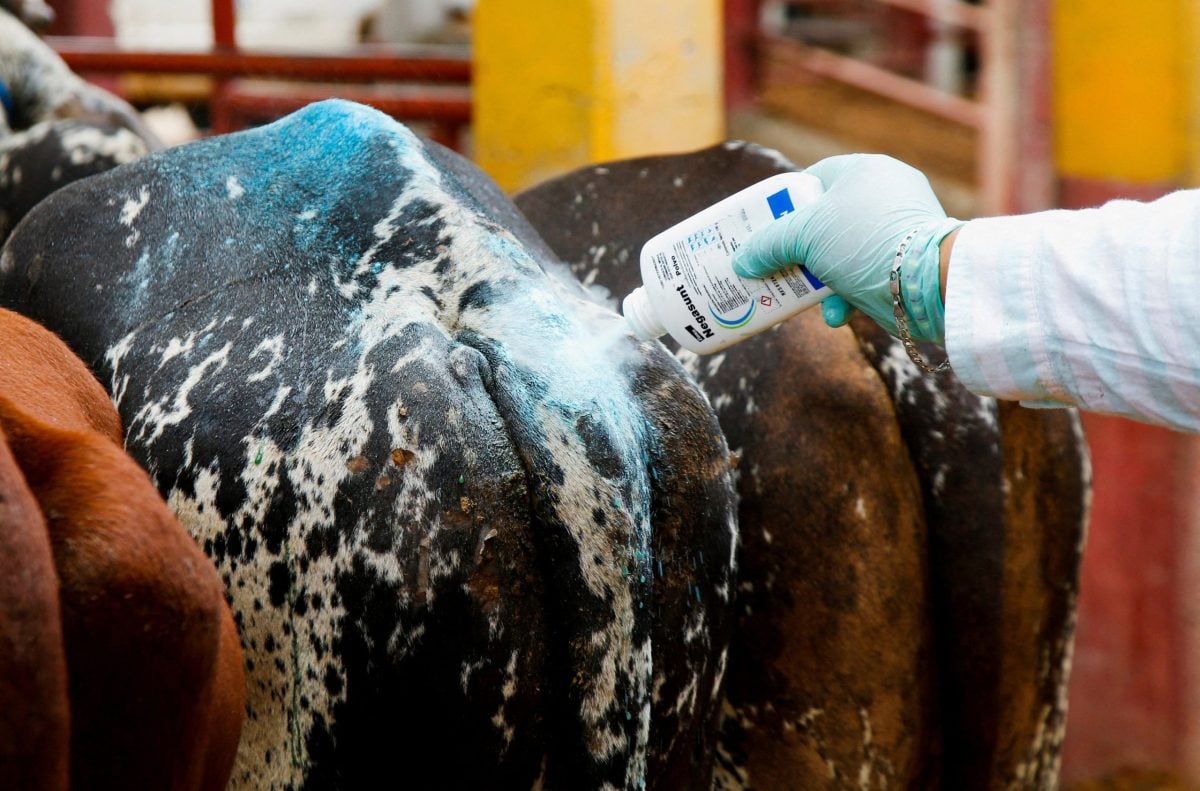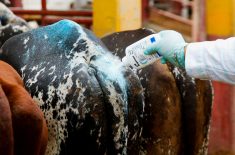U.S. hog futures climbed to their highest levels in 2-1/2 months on Wednesday, lifted by strong wholesale pork demand and futures’ discount to cash prices, analysts and traders said.
Chicago Mercantile Exchange (CME) December hogs led the charge as spreaders bought that contract and sold thinly traded spot October which will expire on Friday.
"December hogs are leading the way and probably getting support primarily from their discount to the CME cash index at 81.05 cents," said Brook Associates analyst Dough Houghton (all figures US$).
Read Also

U.S. not ready to lift Mexican cattle ban over screwworm, Agriculture Secretary Rollins says
The U.S. is not yet ready to reopen its border to Mexican cattle amid an outbreak of the flesh-eating New World screwworm parasite, Agriculture Secretary Brooke Rollins said, but she is pleased with Mexico’s efforts to contain the pest.
Both trading months peaked earlier at a 2-1/2 month high.
October hogs closed up 0.675 cent per pound at 82.575 cents and most-actively traded December finished 1.3 cents higher at 78.1 cents.
Some investors believe nearby months could weaken soon if packers cut cash hog bids to preserve their margins after fulfilling slaughter needs for this week.
They also cited ample hog numbers amid cooler weather that is conducive to hog weight gains, making more fresh meat available to retailers.
From Monday to Wednesday, the industry processed 1.303 million hogs, up 4,000 from a week earlier and 24,000 more than the same period a year ago, according to the U.S. Department of Agriculture.
USDA’s weekly average weight data showed hogs in the Iowa/southern Minnesota market last week at 271.3 lbs., up 2.1 lbs. from the week before but 1.4 lbs. lighter than the same period a year ago.
Meanwhile, ideas that fewer hogs would be available in 2013, after producers downsized their herds last summer due to record-high feed costs, generated speculative and fund buying in the deferred months.
Cattle mostly weak
Aside from firm spot October, CME live cattle futures settled moderately lower in anticipation of higher cash cattle prices. Traders spread out of those contracts into October, traders and analysts said.
Investors were also leery of buying the 2013 trading months as worries about the global economy hung over commodity and equities markets.
"I think people are nervous about the economy and it’s probably keeping the funds out of maybe being as aggressive as buyers," said Lynn Wagnon, owner of Wagnon Commodities.
Lightly traded spot October CME live cattle ended at 124.925 cents, up 0.225 cent/lb. Most-actively traded December finished down 0.15 cent to 126.575 cents and February settled at 130.075 cents, down 0.05 cent.
Traders and feedlot operators expect packers to pay $124 to $125 per hundredweight (cwt) for cattle, steady to up $1 from last week, due to tight supplies and relatively strong beef demand.
Cash bids surfaced at $122/cwt against $126 to $127 asking prices, said feedlot sources.
The price for beef at wholesale Wednesday dipped 22 cents/cwt to $190.98 after gaining 63 cents on Tuesday, USDA said.
CME feeder cattle settled steady to slightly higher as corn prices traded narrowly weak ahead of the government’s crop production report on Thursday.
CME spot October feeder cattle closed at 144.725 cents/lb. Most-active November ended unchanged at 146.7 cents and January finished up 0.05 cent at 149.375 cents.
— Theopolis Waters writes for Reuters from Chicago.











